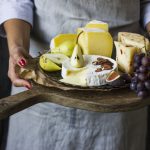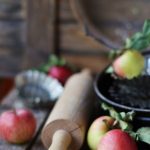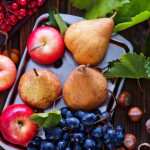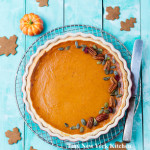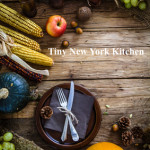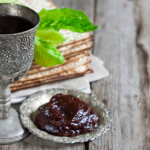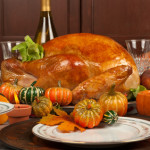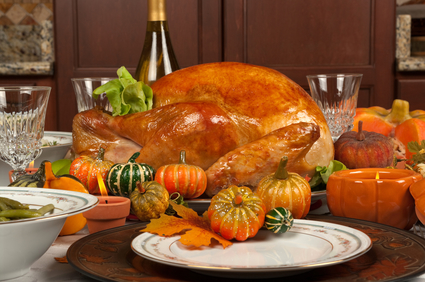Cheese Boards are a no-cook, sure-to-please option for any holiday celebration. Build a cheeseboard that’s affordable yet special. Then toast the season with festive cocktails.
A few inexpensive ingredients and simple homemade touches are all you need for a spectacular, special occasion-worthy spread. Here are some smart tips to deck your board with festivity and flavor without breaking the bank.
For a classic, colorful centerpiece, make your own cranberry and herb cheeseball. Start with a container of spreadable cheese and form into a ball. Use a sheet of plastic wrap to avoid messy hands. Roll the ball in a combination of finely chopped dried cranberries, parsley, and chives until thoroughly coated. Let sit at room temperature for 15 minutes before serving.
No need to buy expensive cheeses. Inexpensive cheddar is always a crowd pleaser. Skip the pre-cut cubes and cut the block yourself. Orange or white, mild or extra sharp. Cheddar is always a favorite.
Upgrade affordable goat cheese by rolling the log in herbs and spices, like dried thyme, dried oregano, or crushed rainbow peppercorns for a beautiful, flavorful crust. You could also keep it plain and top with jarred pepper jelly or mango chutney.
Instead of mixed nuts, opt for crunchy snack mixes, which are often less expensive and just as delicious. For the board, look for one with little or no seasoning.
Give a budget-friendly feta or mini mozzarella balls a flavor boost by marinating cubes in olive oil with herbs like parsley, oregano, or rosemary, and other seasonings like sliced chilis, crushed garlic, or lemon zest. Refrigerate overnight or up to 3 days.
Round out your cheese board with other delicious items like fresh or dried fruit (dried apricots, figs, grapes, and sliced pears), pitted olives, and plain crackers.
Pair your cheese board with a festive holiday beverage and enjoy!
©Tiny New York Kitchen © 2020 All Rights Reserved
Autumn’s bounty is vibrant, varied, and delicious. Apples of all varieties are now available at farmers’ markets and supermarkets, including crunchy, sweet Honeycrisp, gorgeous Galas, MacIntosh mottled with both green and red, pale yellow Ginger Golds, and dark, dusky Paula Reds.
Apples are the perfect snack, satisfying and sweet. Try slicing an apple, place the slices in a plastic baggie, sprinkle liberally with cinnamon, close the bag, and shake until the slices are well coated with cinnamon. The apple slices will stay crisp and white for several days in the refrigerator. Perfect for grab and go school lunches, picnics or work from home snack breaks.
A versatile cooking ingredient, apples go well with both sweet and savory components. Combing apples with plums, cranberries, figs, raspberries or blueberries will yield particularly pleasing desserts, such as pies, puddings, tarts, cobblers, and crisps. Whether baked, poached or sautéed, apples lend marvelous layers of flavor to breads, sauces, slaws, salads, stuffing, coleslaw, chutney, and relishes.
As the weather turns cooler, what could be more comforting than the scent of apples roasting in the oven, mingling with spicy cinnamon. Apples enjoy an easy association with all manner of spices, including allspice, cloves, ginger, and nutmeg.
©Tiny New York Kitchen © 2020 All Rights Reserved
The fruit that is available in the autumn isn’t nearly as abundant as the fruit that’s available in the summer, but there are actually some delicious seasonal autumn fruits that you can look forward to eating. Delicious, tasty, and healthy seasonal autumn fruit is also a refreshing alternative to the heavier food we tend to eat in the colder months. If you love fruit and have been missing summer’s bounty, there are plenty of autumn fruits that will satisfy your craving.
Apples are one of the quintessential autumn fruits. Every fall you will see crates full of apples at farmers’ markets. Try venturing out and get some of the lesser known varieties of apples. Each variety tastes very different and autumn is the perfect time to try all of the different varieties.
Pears are best in autumn even though you can get them year-round. In fall they make a great snack. Like apples, there are many different varieties of pears. Try as many different varieties as you can.
Pomegranates are so delicious because they’re the right combination of tart and sweet. The best pomegranates start being available in late October and early November, which means you must wait for most of autumn for them to be available.
Cranberries are not a fruit that most people think of eating. In fact, cranberries usually only make an appearance as cranberry sauce or jelly. However, there are actually other uses for this tart fruit. They make excellent smoothies when blended with oranges and bananas. Cranberries also taste great when roasted along with vegetables because they add a nice tart bite.
Grapes are a fruit that people eat by the handful. They’re delicious, and they make a nice healthy snack that children and adults love. If you have a chance, try some concord grapes this fall. They are a nice treat and a change from the globe grapes that we always find in the market.
Figs start making an appearance in grocery stores in early fall. They can be expensive, but they’re worth it. They have a wonderful sweet flavor that’s not too intense. Figs do have delicate skin so if you do buy them, make sure you plan on eating them right away.
Persimmons are a sweet fruit, but when you get persimmons you should make sure they’re fully ripe before eating them. Unripe persimmons are very astringent. Make sure they are plump and juicy before taking a bite.
“Work With What You Got!”
©Tiny New York Kitchen © 2019 All Rights Reserved
Whether you’re hosting your first Thanksgiving or you’ve been making the family feast for decades, refer to our Thanksgiving timeline checklist to keep your prepping, shopping, and cooking on track for the big day.
1 TO 2 WEEKS BEFORE THANKSGIVING
Confirm the number of guests and plan your menu
Order your turkey
Plan your table setting, serving dishes, and decorations
Read through all your recipes to determine the food and cooking equipment you will need
Make your shopping and to-do lists
Shop for nonperishable food items, plus any cooks’ tools, cooking equipment and tableware you need
A FEW DAYS BEFORE
Prepare the turkey brine, but do not add the turkey, cover and refrigerate
Prepare food that can be made several days ahead of time, such as pie pastry and cranberry sauce
THE DAY BEFORE
Complete your food shopping
If you ordered a fresh turkey, pick it up or have it delivered
If you are brining the turkey, place it in the brine and refrigerate
Prepare dishes that can be made in advance such as soups and pies
Chop vegetables for side dishes; refrigerate in covered bowls or sealable plastic bags
Peel and cut the potatoes, place in cold water and refrigerate
Set the table
THANKSGIVING DAY
Refrigerate wines that need chilling
Prepare the stuffing and other side dishes
Prepare the turkey for roasting and put in the oven at the determined time
If you plan to stuff the turkey, do not stuff it until just before you put it in the oven
While the turkey is roasting, make the mashed potatoes
While the turkey is resting, make the gravy and cook or reheat the side dishes
Carve the turkey and serve your guests
Have a wonderful Thanksgiving!
“Work With What You Got!”
©Tiny New York Kitchen © 2018 All Rights Reserved
Beautiful autumn! The tapestry of autumn is tinged with splendor, as nature sheds its robe of green and garbs itself in the richly textured colors of fall. As leaves begin to turn deep shades of burnt orange, russet, gold, umber burgundy, cooks seek out lavish and luscious seasonal ingredients.
Apples
Pears
Cranberries
Persimmons
Pomegranates
Cabbage
Rutabaga
Turnips
Cauliflower
Beets
Sweet potatoes
Pumpkins
Squash
“Work With What You Got!”
©Tiny New York Kitchen © 2018 All Rights Reserved

